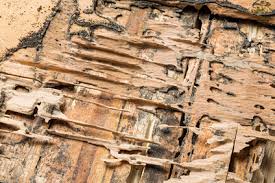Some Ideas on Termite Control With Orange Oil You Should Know
Since the approaches, their costs and efficiency varies depending on the species. You can learn more about the termite types above.Subterranean Termites DIY Treatment Methods1 ) Chemical ExterminationLiquid Termiticides, if implemented properly can be effective in treating Subterranean termites. Application of such compounds can obstruct the passage of termites in to your home, and restrict access to dirt for termites already in your home which they need for moisture.But only a word of warning; their application is not possible for everyone depending on the house. Application of these liquid termiticides in the soil can often require drilling of wood and concrete slabs.
If even a tiny bit of distance is not properly coated then expect some unwanted traffic to your home soon. Keep in mind, termites are really tiny insects. And there colonies can travel through a distance as wide as a pencil.An typical termiticide treatment can last from 5-8 years. It can take around 20 ounce of dilute termidor to deal with 60 linear feet of space.
Termite Control With Imidacloprid for Dummies
These baiting systems operate more effectively when the termite colonies feed on the bait as a major food source. Think about it as a virus. Once an infected termite gets in contact with others, it multiplies its victims extensively.How do Termite Baits workTermite baits consists of wood, cardboard or any other acceptable termite-food poisoned having a chemical lethal to termites.
This is essential for two reasons; one being that we want the information of new food-source handed into other termites. Second, the transmission of poison would effect a much larger target, even the ones which never fed on the lure. A fantastic termite bait system can cost you around $500. Drywood Termites DIY Treatment:Drywood termites earn their colonies in wood constructions, unlike subterranean termites.

The purpose here is to make sure that the toxic material is in touch of termites. You can tell youve reached the termite gallery when you have to use less pressure while drilling.Dampwood Termites DIY TreatmentDampwood termites are largest in size, and reside in rotten structures that have high moisture conditions.
The 45-Second Trick For Termite Control With Orange Oil
And most of the times their presence indicates an unusual supply of moisture. These can be plumbing defaults, insufficient ventilation, poor drains or construction made in a way that gives an excessive amount of contact with dirt. The ideal practice to take out dampwood termites in your home is to identify and take out the moisture resources that are necessary for dampwood termite survival.Frequently Asked Questiondo termites flyNot all termites can fly, but termite colonies can create flying termites during a termite swarm. A termite swarm is the season when well-built termite colonies reproduce to make new termite colonies.
Nature provides the new-born termites wings, so they might fly and find themselves a new home. When termites find a new home and partner with their partners. The wings drop off.Flying-termites are normally confused with flying-ants. You can tell the difference by closely examining their bodily appearance. Termite wings are of equal size while ants have unequal wings. And ant antennae bend 90 degrees while termite antennae are straight.where do termites liveTermites have many kinds.
Subterranean termites, being the most common live in the land. The produce mud-tubes to travel to food sources.On other hand, drywood termites like to live in the wood, theyre feasting on. These can include your furniture, wooden-house constructions, cardboards or any thing that this contact form satisfies their hunger for cellulose.The third kind is dampwood termites.
Dampwood termites are much bigger in size compared to other termites. They need a good deal of moisture to survive, more than an ordinary home provides. That is the reason why there colonies are hardly found inside homes.how long termites liveTermites are tough insects, considering their colonies get attacked by predators and fungi.
The Single Strategy To Use For Termite Control With Imidacloprid
The Queen in a colony, achieves the longest life. Since, everyone in it protects the queen. Studies have found a termite queen can survive up to 20 years.Whereas the soldiers and workers are not that lucky. Both normally live as many as browse around here 2 decades. When required the whole colony sets their life at stake for the queen. The termites save the Queen and the Queen conserves the colony.